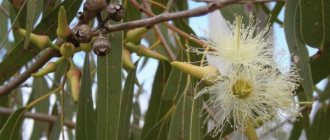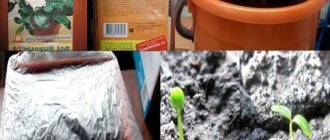What do lupine seeds look like?
This culture surprises with its beauty and diversity. In its natural form, Lupine grows almost all over the world. Currently, there are about 200 varieties of it.
The characteristic features of Lupine are excellent drought resistance and ease of care in adulthood.
When the crop fades, it throws out its seeds. Their color, size and even shape may vary.
Mediterranean varieties have larger lupine beans than Western varieties
The seeds of the crop look like flat-round beige beans with smooth skin. But when they ripen, they crack and very small grains spill out.
Important! Lupine can be used not only as a flowerbed decoration, but also as green manure. And on the farm there is a type of fodder lupine.
Pre-treatment of lupine seeds
To improve germination and obtain more uniform seedlings ready for harvesting at the same time, it is advisable to pre-soak lupine seeds. Without soaking, they do not germinate as well and not at the same time. To soak, just moisten gauze or cloth in warm water, scatter seeds on half of it and cover them on top with the second free part. On a plate in a warm place, the seeds will quickly grow, and as soon as the first signs of activation appear, you can start sowing.
Immediately before sowing, it is advisable to mix the seeds with powder from lupine tubers, due to which the bacteria they need will quickly develop on young seedlings.
Lupine seedling
When to plant lupine seeds for seedlings
It must be taken into account that for the full development of the culture it takes from 30 to 50 days after the appearance of the sprout. If you sow lupine seeds correctly for seedlings, the first leaves can be seen within 1-2 weeks. Based on the timing, it is recommended to calculate the start date for growing the flower, taking into account the region: 1.5 months before transferring it to open ground.
The generally accepted estimated time frame for the procedure is the end of March or the beginning of April. Taking into account regional characteristics, it is best to grow lupine seeds in the central zone in the first week of April. In Siberia and the Urals, this deadline is shifted: all work begins a week later. But in the southern regions, growing seedlings is allowed from mid-March.
Independent collection of lupine seeds and their selection for sowing
Lupine seeds remain viable for up to 5-6 years. It is preferable to use freshly collected seeds, but even after several years of storage they will germinate well. Moreover, this perennial prefers pre-treatment of seeds before sowing, which significantly increases the germination rate.
If you want to collect lupine seeds yourself, you should carefully monitor the ripening of the fruits. Lupine beans crack quickly. Therefore, it is better not to miss the moment when they evenly turn yellow and dry out slightly. You can also use the tying method. Lupine fruits are usually cut in several stages.
When purchasing seeds, carefully check the information about the variety and its characteristics - plant height, planting density, preferred method of propagation and care. Lupins are easy-to-grow plants, for which it is not at all necessary to choose only elite types of seeds. Decoration and aesthetics are the main guidelines. And in order to become the owner of high-quality seeds, it is enough to give preference to trusted companies and stores.
Three strategies for sowing lupine seeds:
- Sowing in open soil before winter.
- Sowing in open soil in spring.
- Sowing seedlings
These three methods differ in complexity, flowering time, and growth rate. The simplest method, of course, is winter sowing, the most labor-intensive is the seedling method.
How to grow lupine seedlings from seeds at home
And although an adult flower is easy to care for, the seedling is very picky. Despite the fact that growing perennial lupine from seeds seems like a simple task, you should know a number of nuances when working with the plant.
Selection of capacity
Preparing the container is necessary taking into account the peculiarities of the root system of the flower. It is of a rod type and is sensitive to damage. Based on this, transferring seedlings to open ground with further cultivation is possible only by transshipment.
It is best to plant lupine seeds as seedlings in spring in individual large glass pots or containers. The height of each container for growing a flower should be 10-12 cm, and the diameter should be at least 7-10 cm.
An alternative to individual containers is wooden or plastic boxes, but seeds must be placed in them at a great distance
Soil preparation
Choosing soil is not difficult: you can buy it in a store or prepare it yourself. Propagation of lupine by seeds and its subsequent cultivation should be carried out in light, loose and moisture-permeable soil.
When preparing soil for seedlings yourself, you need to mix peat, turf soil and sand in a ratio of 1:1:0.5. All ingredients must be combined evenly until a homogeneous consistency is obtained.
Seed selection and preparation
It is not recommended to plant lupins in spring without pre-treatment. The yield of seedlings and the quality of seedlings depend on the preparation of seeds.
Only whole beans without signs of rot or damage can be grown. It is advisable to reject very small and deformed samples.
All work is divided into two stages:
- The seeds need to be germinated. To do this, wrap them in cotton cloth and dip them in clean water. Place the workpiece in a plastic bag and tie it. Transfer the lupine to a room where the temperature is not lower than + 23-26 °C. Every day, the future seedlings are checked: as soon as they hatch, immediately move on to the next stage. If mold appears during germination, wash the beans and wrap them in new cloth.
- Treat the seeds with a special powder. To obtain it, it is necessary to thoroughly chop and dry the tubers of adult lupins, and place them in glass containers. If beans are treated with this powder before sowing, the nitrogen-fixing bacteria present on it will promote rapid germination. Such seedlings will be strong and healthy when grown.
Ready for sowing and further bean has a powerful sprout, without signs of rot and wilting
Stratification of lupine seeds at home
Some gardeners are of the opinion that without preliminary mechanical treatment, perennial lupine will not sprout. Growing a flower from seeds involves stratification as the first stage of sowing.
To do this, you need to rub each bean with sandpaper to break the integrity of the peel. Only after this treatment can you wrap the seeds in a damp cloth and wait for germination.
Rules for sowing lupine seedlings
To successfully grow a flower, it is recommended to adhere to the following algorithm:
- Place perlite on the bottom of the container, 2 cm thick. It will serve as drainage.
- Fill the container for future seedlings with soil so that 2-2.5 cm remains to the edge of the top.
- If the container is individual, then place the material in the center of the glass. If the box is shared, then the distance between the seeds should be at least 5 cm.
- Cover the lupine beans with soil. Layer thickness no more than 5 mm.
- Moisten the soil generously with a spray bottle.
- Cover the container with cling film or glass until the shoots appear.
Important! If during work the sprout was accidentally broken, then such a bean is unsuitable for growing. Defective copies should be discarded.
Description and varieties of lupine
Lupus is an annual and perennial plant in the legume family. Herbaceous species are more common than shrubs.
It has a lot of subspecies, different data indicate the numbers 200–1000. Lupine can be found in every corner of the world. You can see small plants up to 10 cm and large plants up to 4 m. Palmate leaves are collected on a basal rosette. The petioles are long. Flowers can have a variety of shades: white, blue, red, purple, yellow and many others.
"Lupus" is translated from Latin as "wolf", which shows how tenacious and adaptable they are to the most unfavorable conditions. We have heard rumors since ancient times that it used to be possible to turn a person into a wolf using a potion made from lupine.
Four types of lupine are most common in Russia:
- Lupinus luteus – Yellow lupine . The plant has a height of up to one meter. It is annual and pollinated by insects. Yellow flowers are characteristic of it. A rather heat-loving plant has seeds, compressed on the sides, white or pink with black spots. A thousand seeds will weigh approximately 150 grams.
- Lupinus albus – White lupine . An annual plant common in Europe. It pollinates independently and grows up to two meters in height. The ancient Greeks and Egyptians knew about this plant. It became the prototype of modern “fast food”. In many countries, including Russia, lupine is still valued.
- Lupinus angustifolius – Angustifolia lupine, blue . The plant is self-pollinating, grows up to one and a half meters tall, and is an annual. The flowers are blue-violet, pale pink and white. The seeds ripen quickly and have a rounded, kidney-shaped surface. The weight per thousand seeds is about two hundred grams. The blue type of lupine tolerates cold well and is often planted in the northern regions of many countries.
- Lupinus polyphyllus Lindl – Multileaf lupine . This species is quite common in our gardens. Cross-pollination, resistance to cold and unpretentiousness are its main advantages. The plant grows up to 120 centimeters in height and lives up to ten years. The seeds ripen quickly, but not in the first year of life, when only a rosette of leaves is formed. Straight, strong stems have virtually no foliage. Palmate leaves with fluff grow on long petioles. The blue flowers are collected in multi-flowered racemose candle-shaped inflorescences and are up to 35 centimeters long. Blooms throughout June. When removing faded inflorescences, it can bloom again in August. The bean-shaped fruits have irregularly shaped seeds inside. They can be stored for up to 4 years for seedlings.
- Lupine "Lulu" Russell is a perennial plant with early maturity. The bushes reach a height of up to 60 centimeters. Blooming in June with a wide variety of colorful inflorescences, it can once again delight with its brightness in the August days. Gets along easily with other perennial representatives. There are approximately 40 seeds in one gram. An unpretentious culture loves light. Seeds can be sown directly into open soil in mid-spring, when it becomes warm. It will bloom this same year.
- Lupinus arboreus Sims - Tree lupine . The plant is perennial and grows up to one and a half meters tall. It blooms with white and yellow inflorescences from July to August. Not suitable for wintering on our territory, as it does not like harsh climates.
Lupine
Lupinus polyphyllus Lindl
Lupinus angustifolius
Lupinus albus
Lupinus luteus
Lupinus arboreus Sims
Caring for lupine seedlings
The principles of agricultural technology are simple: watering, lighting, fertilizing and ensuring optimal temperature. When planting perennial lupine with seeds, you need to take into account that in the first months of growing the flower you need to make efforts.
Temperature
Favorable conditions for bean germination are lighting and temperature. The temperature in the room should be +20 °C. This indicator is optimal when the first shoots have appeared and the shelter has already been removed. If the room is cold, the process of growing annual lupine from seeds will slow down.
Lighting
The containers should be placed on the windowsill on the south side of the house. If the weather is cloudy, then installing a phytolamp is necessary. It is not necessary to use the device around the clock, but providing the seedlings with light for an additional 3-4 hours will not hurt.
Watering
The soil must be moistened, but moisture stagnation is not allowed. It is best to use a spray bottle in the first stages of cultivation. In the future, watering should be carried out 1-2 times a week, monitoring the condition of the soil.
Top dressing
When growing lupine seedlings, it is not recommended to use fertilizing: there is a risk of disrupting the formation of the root system. And if the seeds grow excessively, it will be difficult to transfer the flower to open ground in the future.
Picking lupine seedlings
The procedure should be carried out when 2-3 true leaves appear. Before picking the seedlings, it should be watered abundantly to make it easier to remove the lupine from the container.
Work algorithm:
- Fill the glasses with nutritious soil.
- Make indentations in them.
- Transfer the seedlings into glasses along with a lump of earth, sprinkle the roots with soil.
- Water the lupine seedlings generously.
To successfully grow a crop during picking, the plant can be dusted with ash as a top dressing
Secrets of growing lupine
Wild flowers arouse increased interest in people. Many people really like its inflorescences. But when planting, it happens that the plant does not germinate . Most often this is due to the fact that the soil is too acidic, with a high content of peat, which lupins do not like at all.
Hybrid mixtures of perennial crops sold today come in a wide range of colors. Violet colors are the most popular, as they act as dominant colors. But often people are faced with the fact that the plant does not take root well or produces few shoots . Don't despair in this case.
Some housewives do the following: after flowering, they collect ripened seeds and scatter them in those areas where they would like to see lupins next year. Usually the next year they sprout very well and delight with numerous inflorescences.
We will also help those who don’t know where to plant lupins to . If the area around the site is quite large and there are ditches, paths and paths overgrown with weeds, you can scatter the seeds after mowing and harvesting the existing grass in the fall along these places. Many people will enjoy the colorful summer mood they create.
It is also good to settle in a plot next to other crops: shrubs and trees (just not with a low crown that hides the light). A fairly simple job brings a lot of pleasure in the future.
Transplanting seedlings into open ground
The optimal time for the procedure is mid or late May. Each lupine should have 5-6 leaves and a strong stem. Before transferring seedlings to open ground, they need to be hardened off. To do this, you need to provide her with fresh air for ten days.
The bed for lupine seedlings should be in a sunny, open place. Dig up the soil in it and fertilize it with organic matter and complex minerals.
Work algorithm:
- Form holes in the flowerbed. There should be a distance of 30-50 cm between them.
- Water the seedlings and remove them from the container.
- Transfer the lupine into the hole along with the earthen lump.
- Cover the roots with soil and compact the soil around the trunk.
Important! The best time to transfer lupine seedlings to open ground is cloudy weather. On hot days, preference should be given to early morning or late evening.
Kinds
Currently, biologists know about several hundred species of lupine - wild and cultivated. Varieties of multileaf lupine are used for growing in flower beds and flower beds. Among them, Rusol hybrids stand out, reaching very large sizes. Their uniform and dense inflorescences have bright shades. These cut lupins will decorate any bouquet and will last a long time in vases.
Only some varieties of annual lupine and perennial lupine are used as green manure crops. Green manures include white lupine, several types of blue angustifolia, and yellow. Lupines reproduce by seeds, which ripen in beans that vary in size, color and shape. Thanks to research by scientists from the All-Russian Research Institute, it has been established that there is a relationship between the coloring of the surface husks of beans and the shade of flowers. White shades of seeds are characteristic of white lupins. Narrow-leaved species with blue flowers are characterized by dark-colored beans.
Why do lupine seedlings die?
When growing crops, gardeners are faced with withering of sprouts. Most often the reasons are the following:
- lack of light: seedlings stretch out, weaken and lie down;
- overmoistening: the crop begins to rot, the soil becomes moldy;
- temperature changes: drafts from a window or door lead to the fact that fragile seedlings die or significantly slow down growth.
Important! Particular attention should be paid to yellowing of the sprouts: this is a sign of the development of chlorosis. The cause of the disease is acidified soil.
Recommendations and common mistakes
Planting and caring for lupine from seeds can be complicated if serious mistakes are made. Experienced gardeners recommend adhering to several rules:
- it is mandatory to stratify and scarify grains before planting;
- soak seeds in spring for swelling and rapid germination;
- disinfect planting material to protect against fungi and pests;
- Do not forget about supplementary illumination of seedlings when growing in conditions of lack of sun.
It is recommended to use fresh seeds no older than one year for planting in spring. Even when stored under the right conditions, the germination capacity of grains gradually decreases.
Why do lupine seedlings die?
If lupine seedlings die, this can be caused by several reasons:
- Lack of light. With a lack of sun, seedlings stretch out and weaken, begin to wither and lie down.
- Overwatering. When growing lupine in the spring, you need to water it regularly, but not too often. If the substrate becomes waterlogged, the crop will begin to rot or suffer from fungal infections.
- Temperature changes. When growing lupine on a warm windowsill, you must ensure that cold air from the street does not enter from the cracks. For young seedlings, both random drafts and careless ventilation pose a danger.
Lupine from seeds may turn yellow and die in the spring when grown in acidic soil—the crop develops chlorosis.
During the process of germinating lupine seeds, you need to ensure that the seedlings are not attacked by midges, aphids and other pests
Interaction with other plants
Lupine will be a good predecessor for potatoes and tomatoes, various varieties of cabbage, turnips, radishes, peppers, garden strawberries and strawberries. It is planted between the rows of vegetable nightshade crops.
Only legumes cannot be predecessors for lupine, due to the accumulation of common pathogens and pests in the soil. After the rest of the plants, green manure will grow without any problems. Most often, cereal grasses, spring and winter grain crops, and buckwheat are used as lupine precursors. It is grown in the same place no more than once every 3 years.
When to remove green manure
Lupins must be mowed before mass budding and flowering begin, until the stems and pods of the plants begin to harden. Sometimes it takes up to 60 days for young green pods to appear. But under favorable conditions - timely soil moisture and air temperatures within 20-25 ° C, this period is reduced.
Read how to choose a lawn mower for mulch HERE
How does it affect the soil?
Lupine roots go 2-2.5 m deep into the soil, absorb nutrients and moisture from the lower layers of the soil and transfer them to the surface layers of the earth. Green manure not only loosens the soil, but changes its structure and enriches it with biological nitrogen and phosphorus. The most effective use of lupine is on sandy loam and poor soils with high acidity. Thanks to the substances contained in the roots and green parts of lupine, soil deoxidation occurs.
Read our article about the benefits of mulching HERE
Diseases and pests (treatment)
Appear due to improper organization of conditions. The following diseases mainly affect lupine:
Gray rot. The yellow variety is most often affected. It appears at the base of the stem and root, after which it spreads to healthy areas of the upper part of the flower. The affected areas become dark gray in color and become watery. With high humidity, the lesions become brownish-green, and in the heat they take the form of dry ulcers.
Root rot. Appears in seedlings and adult plants. The young growth begins to rot in the area of the roots, the stem at the neck of the root system. Very often young growth dies even before it has time to sprout to the surface. Dark brown spots resembling ulcers appear on seedlings that have already hatched.
In mature specimens, the root system begins to die off, and the trunk rots. Flowers affected by root rot grow poorly and quickly fade.
It is of fungal origin. It develops at low humidity and high air temperatures of 17-26 degrees Celsius. The disease is transmitted from undecayed diseased plants, sometimes through beans. The yellow variety is more resistant to this type of fungus.
Brown spot. A fungal disease that affects almost the entire plant. Oval dark brown spots appear at the very bottom of the stem. The leaves are also affected by the disease. The spots usually occupy almost their entire surface. On young animals, the spots look like dots with a green halo.
Over time, a black coating appears on them. Which contributes to their withering and falling.
Remember! Favorable conditions for development are high humidity and warm weather. White and perennial species are especially often affected.
The fungus is transmitted through the remains of infected plants and sometimes through seeds.
Fusarium wilt. May appear throughout the entire growth period. The leaves turn yellow, begin to curl and subsequently dry out. The bush will eventually wither. When cutting the stem, you can notice browning of the blood vessels. The root system also dies.
In humid weather, a whitish or pale pink coating, and sometimes pads, forms at the base of the roots. It also affects bean pods, causing the fruit to ripen weakly. The likelihood of an infection attack increases during heavy rainfall, after prolonged heat and drought.
This disease is also classified as fungal. It remains in the soil for six years. Basically, an infected plant does not produce fruit. To strengthen the immune system, you can use fertilizers containing phosphorus and potassium. Narrow-leaved varieties are most resistant to this fungus. The most common types of disease are the white and yellow ones.
Blackish spotting. It is of fungal origin. Appears first on the sheets at the bottom. Over time, it spreads to the healthy upper part. Affects almost all varieties.
The spots initially turn gray. In the process they begin to turn black and then acquire an olive color. Favorable conditions for rapid development are wet weather. Basically, the affected crop does not produce beans, and the stems darken and dry out.
Drying of stems. The yellow species most often affects, although all classes of fungi are affected by this fungal disease. It manifests itself through the appearance of dark brown spots. Under favorable conditions (high air humidity), the drying out of the stems progresses and the spots increase in size. After which the diseased plant quickly dries out and dies. The fungus is transmitted from undecayed remains.
Rust. Most often it affects specimens starting in mid-summer. Bright orange spots appear on the surface of the leaf. Then they darken and become black-brown. Yellow and narrow-leaved leaves are susceptible to damage on both sides, but perennial leaves are affected only on the back side.
Important! Rust develops in cool, damp weather. It is also necessary to monitor watering, as excessive watering can provoke the appearance of fungus.
Bacterial spotting. It affects seedlings and mature specimens. At the seedlings, dark brown spots form on young leaves, the stems begin to rot and the young growth dies. In adult specimens, the apex most often suffers, which is covered with brown oblong spots with a lighter outline. The disease is of bacterial origin, transmitted through infected beans and unprocessed plants.
Browning. The bush produces a large number of small leaves with edges curled towards the center. As the disease develops, brown spots and stripes appear at the top, which eventually affect the lower areas. It becomes weak and fragile, the main stem becomes branchy. As a result, the bush dies. The infection is transmitted through aphids, infected plants and fruits.
Mosaic. Characterized by the appearance of brown spots on the foliage. They are much smaller than healthy ones. Over time, their edges begin to accumulate. The difference between this disease is that only the diseased petals of the compound leaf fly off the plant, leaving behind a burnt stem. Mosaic disease is transmitted through the sap of diseased specimens, aphids or infected seeds.
How to fight diseases
The main rule of prevention is to plant bushes in different places every year. It can be returned to its original location only after three years. It is best to plant any cereal crop in their place.
During planting, it is necessary to add fertilizers to the soil, which contain phosphorus and potassium. The yellow variety, in wet weather, is recommended to be planted together with cereals. This will protect the bush from diseases. It is also worthwhile to regularly remove weeds from the ridges.
When the first signs of diseases appear (spot, Phomopsis, rust, bacteriosis), spray with fungicides.
Pests
The following parasites most often attack lupine:
- aphid;
- germ fly larvae;
- nodule weevils;
- thrips;
- stem miner fly.
Aphids are dangerous because they feed on sap and cause the plant to die. A ladybug or its larvae will do a great job with it. To attract beneficial insects to the garden, you should sow fragrant dill next to the beds. You can collect parasites by hand, but this is suitable if there is a large infestation of aphids. But don’t forget about insecticides.
Remember! With the appearance of aphids and other pests, the likelihood of infection increases several times.
Sprout larvae live in the ground. They feed on roots, eventually gnawing right through the entire main trunk of the bush. It is worth fighting it by deep digging of the flower bed and timely removal of weeds. Before placing in the ground, the beans must be treated with special substances.
Nodule weevils emerge from the ground after wintering. They move from infected remains to healthy ones. They figuratively nibble leaves. Gradually they move to the growth point. With severe damage, infection with various diseases is possible, which leads to death.
Dry and hot weather, as well as frost, can reduce the weevil population. But for prevention, it is necessary to carry out deep digging of the site and treat the plants with special chemicals.
Signs of thrips are very similar to aphids. The parasite infects the leaves, as a result of which they curl towards the center of the stem, and the bright brushes wither.
To prevent the occurrence, you should avoid drying out the flowerbed. Periodically, the plantings need to be sprayed with plain water. Since thrips love dry climates and most often appear in the temperature range of 20 to 25 degrees Celsius. They reproduce very quickly and in a week the number of thrips can double.
If detected, you should immediately treat the plant with insecticides and, if possible, cover the bush with film, preventing air from entering. After a day, remove the cover and repeat the procedure if necessary.
The stem miner fly settles on those specimens in which three generations of the fly have developed. It overwinters in chamomile stems, where its population is actively developing.
The larvae of the stem miner fly gnaw the stem from the inside, as well as the leaves on both sides, as a result of which they become discolored. When a pest appears, all affected leaves are removed. In case of severe damage, it is treated with special chemicals.
Conclusion
Lupine is a beautiful and majestic flower. There are often species that reach about four meters in height. Due to its vitality, it takes root in the most unimaginable places. But many consider it an ordinary weed and insist on its uselessness.
In the vastness of not only our country, it was used as animal feed. And in a well-kept garden it will take pride of place. If all the rules are followed and the necessary conditions are created, bright brushes will delight the eye for a long time. That's all you need to know on the topic: growing lupins from seeds, when to plant seedlings or in open ground.











